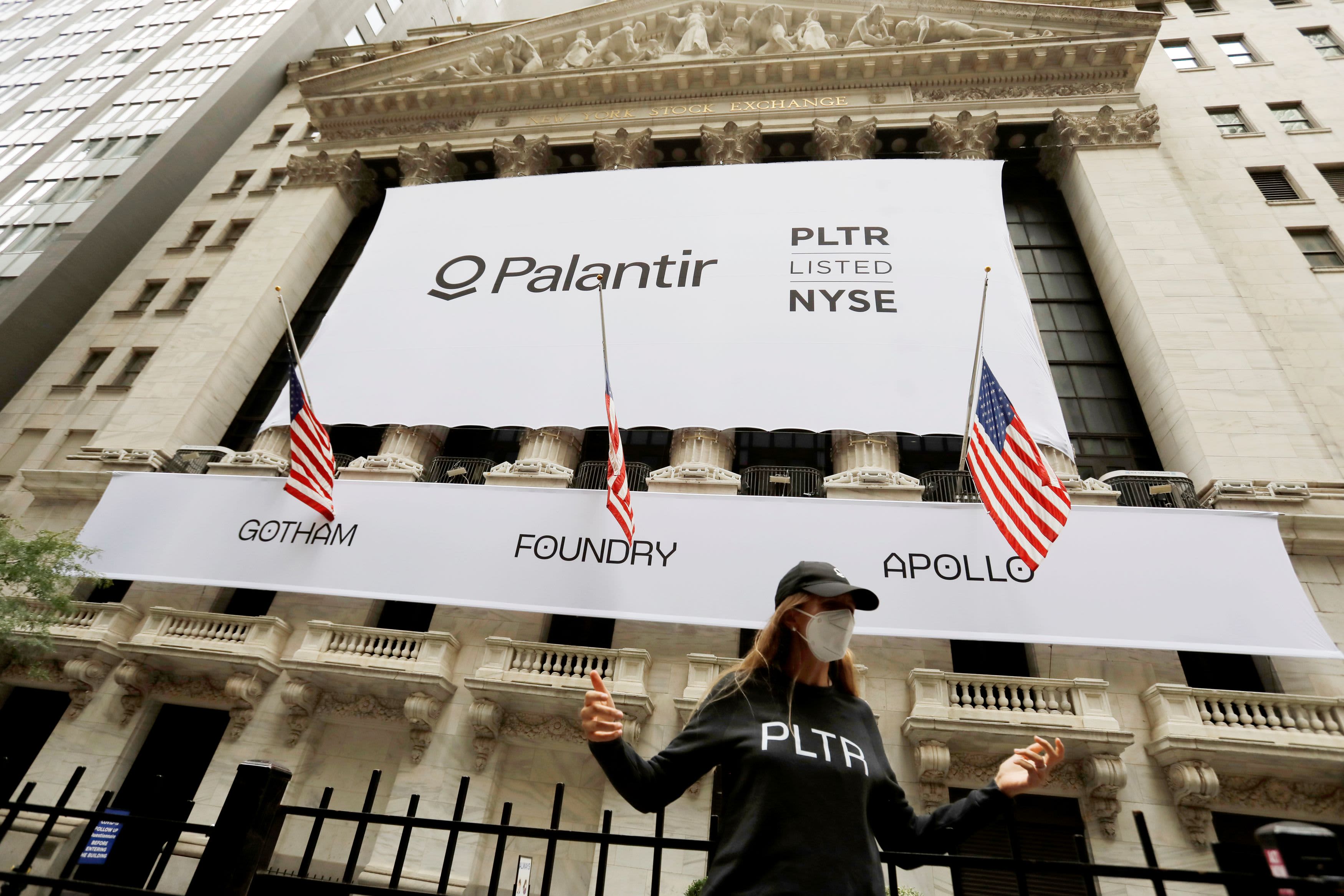Palantir Is Falling. Why?
On Tuesday's morning, Palantir, America's big data company, reported that its stock is down by over 10%. Now that something is wrong with Palantir Stocks, should people sell?
Author:Stefano MclaughlinReviewer:Luqman JacksonFeb 22, 202184.6K Shares1.2M Views

Now that Palantir Technologies Inc.is crumbling, it might be for reasons that many prospective shareholders are not even aware of.
On Tuesday, the big data company reported that its stock is down by over 10 %during the regular session. It posted a revenue of $322 million for the fourth quarter, up 40 % from a year ago. This is well ahead of the Street consensus at $300.7 million.
But is Palantir Stock is dropping?
If It Doesn’t Seem Like It's Dropping, Then What Is It?
When one takes a look at the company’s stock, one can easily see it is in a significant run-up. But most experienced investors are aware that the lock-up period is ending.
The main reason Palantir Stock is dropping is its Initial Public Offering (IPO) lock-up period of days, which is typically 90 to 180 days.
Palantir had initially didn’t want to pursue an IPO, feeling that going public would only make it difficult for the company, seeing that it is a massive secretive data company. This was according to its Chief Executive Officer, Alex Karp. This statement was about eight years ago. But five years later, on exactly October 18, 2018, a report by the Wall Street Journal said that the company was thinking of going public, especially in the first half of 2019. This was actually coming in the aftermath of the valuation by bankers who told the company it could be as high as $41 billion! By July 2020, Palantir had confidentially filed for an IPO. It debuted on the New York Stock exchange in September through a direct listing.
This means after 180 days that the stock goes public, early investors and insiders in the company can no longer be selling. These include Palantir’s founders, owners, managers, and its employees, angel investors, and venture capitalists, all of whom are also heavily affected.
Palantir's entrance into the Stock Exchange was dramatic and with some show of levels. That September when it debuted, its opening trade was at $10 per share. With that, when one multiplies its share price by its number of outstanding shares– the market capitalization– Palantir is assured of $16.5 billion! That value has since changed, as it had nearly tripled as at the closing shares of Friday at $31.91, allowing the company to have a $52.6 billion market cap.
With these big numbers, it was a point the company was trying to make, to distance itself from the rest of Silicon Valley’s most powerful companies. Karp has made this clear to the company’s investors in its way to going public. To show its commitments to maintaining its values, and to work more with government agencies, Palantir relocated to Denver as its headquarters, away from Palo Alto. However, Palantir’s romance with government agencies did not go down well with employees of Microsoft, Amazon, and Google, who warned of the dangers of working with these agencies.
But, perhaps, this can be seen, as the private sector’s eternal suspicions of governments and their policies. Palantir, however, appeared to fair well. In fact, much of its biggest business deals came from money-spinning deals with the government, especially in the use of its data analytics software.
To clarify its intent to abide by its mission and values, Palantir insists on doing business with actions that align with these values.
Now That Something Is Wrong With Palantir Stocks, Should People Sell?
Now Palantir has gone down by 9%, and that is a huge fall down the cliff. For the past few days, there has been a downward strain for the stock. Now, it’s already at $29. It’s hard to pin down exactly why this is happening, and for those who are considering the answer to this, should they also be thinking of selling their position or maintain it?
The answers can be really quick when one looks at them. But here’s the bottom-line: a lot of people haven’t sold their shares yet, and are staying in with the company. Another question again: Why?
Palantir went public through a direct listing. This allows its shareholders to sell their shares directly to retail investors. Looking at it, it seems pretty much different from a traditional IPO. In traditional IPOs, companies sell new shares to allow them to raise cash.
What this means is that the company imposes a lock-up. Although Palantir doesn’t have to do this, they did, further meaning that shareholders in Palantir can sell 20% of their holdings if they chose to. But to do this, this 20% limit will be lifted only on the third trading day after each fourth-quarter earnings report of the company. In 3 days, people were expecting a massive selloff of shares by both employees of Palantir and its shareholders. Consequently, they are selling their stocks right now, fearing that the same thing might happen in the next few days.
The other reason the shares are dropping is the financial reports of the company, it’s easier to see just the bottom-line here. People might not really be reading the reports correctly. By looking at their loss operations, they could easily think that Palantir has lost more this quarter, almost more than double, than they did during last year’s quarter. Essentially, there’s a huge loss here, and they’re losing more. Why is this so?
The reason is this thing is called stock-based compensation. It represents the stock-based compensation they gave out to their employees, executives, and directors with equity in the business. This doesn’t affect the bottom-line. Anyone who reads the Adjusted Operating Incomeof the company, would see that the Adjusting Operating Income of this quarter is 32 %. This is positive. That means Palantir went from 31 % negative to 32 % positive. Most people miss this point: they went from 45% negative last year to this year’s entire 17 % positive. The majority of this happens in the 4th Quarter (Q4) in just last year. That means last year’s Q4 was massive for the company. Because people sold off their shares based on the actual expiration of the lock-up, they miss this important fact.
Once some of the shareholders started selling, others picked up the trend faster than imagined. And there are a lot of short selling companies. A lot of things have caused the company to reach this place.
For those who are willing to take risks, this could be a big opportunity to buy more shares. If anything, they’re probably adding more shares. From 2019 to 2020, the revenue generated from the top 20 customers increased, indicating that their customers are spending more, going from almost $500 million to $700 million. However, while this is going on, the customer concentration is going down. This is a good thing. Every company would want to have less client concentration and avoid a situation where it has to depend on a specific client. That would be pretty bad for business.
Somehow, Palantir seems to be generating more from its top 20 customers by getting less client concentration. This is a perfect case of good management. In 2019, Palantir’s average revenue per customer went up from $5.6 million to 7.9 in 2020 alone. New customers acquired in 2020 generated over $42 million in revenue, which is a new record on its own. Overall customers in the Acquire phase in 2020 generated over $77 million in 2020 revenue. These figures go to show that Palantir is growing bigger and bigger with time. And, yet, people are missing out on this.
8% out of the Fortune 500 companies, 25 % of the Global 300, and 12 % of the Global 100 are Palantir’s clients and have continued to do business with them in one way or the other.
When observing Palantir’s Q4 revenue in 2019 and 2020, there was a 47% of growth in revenue quarter-over-quarter the year and an annual 47% revenue growth year-over-year. These are massive figures! Yet, again, people still think Palantir is losing money.
While expanding the commercial sector in Q4 of 2020, the government segment generated over $190 million in revenue; that’s an 85% increase year-over-year. For new contracts, there’s 77% growth. While they are ramping up the commercial sector, the government sector is growing up as well.
As of December 31, 2020, there was a total deal value of $2.8 billion. That’s about 24 % year-over-year, and 31 % year-over-year on a constant duration basis.
In its Q4, the company claimed to have closed about 21 deals that combinedly worth $5 in contract value. This also includes 12 worth $10 million. The U.S. Army, the U.S. Food and Drug Administration, and PG&E are just some of its new contracts. That’s a massive thing, and it explains the future projections of the company.
As for its long-term orientation, Palantir has about $4 billion or more in 2025. That’s 4 times what they are making now. Its anticipated revenue growth for 2021 is 30%. In the first quarter of the year, it expects revenue growth of 45%, with a $322 million midpoint. When one considers this projection, it’s quite higher than Refinitiv analyst estimates of about $309 million.
People are selling their shares because they think it’s bad financials. This is very inaccurate. There is a lot of speculation in the market because the shares went so high and they were making a profit. This is quite all right. Palantir’s long-term investors are not getting out. They see it as a good opportunity for them to get more shares. At least, this is Karp’s plea to them in his pre-recorded video regarding Palantir’s earnings.
“„“We hope those of you on this call who are current investors stay with us and those of you who prefer a more short-term focus, that you choose companies that are more appropriate to you."
It’s as simple as that.

Stefano Mclaughlin
Author

Luqman Jackson
Reviewer
Latest Articles
Popular Articles

